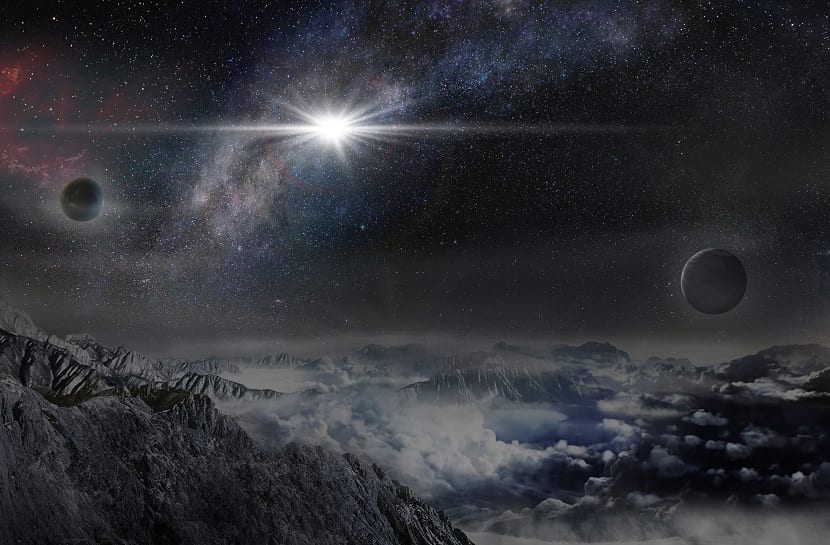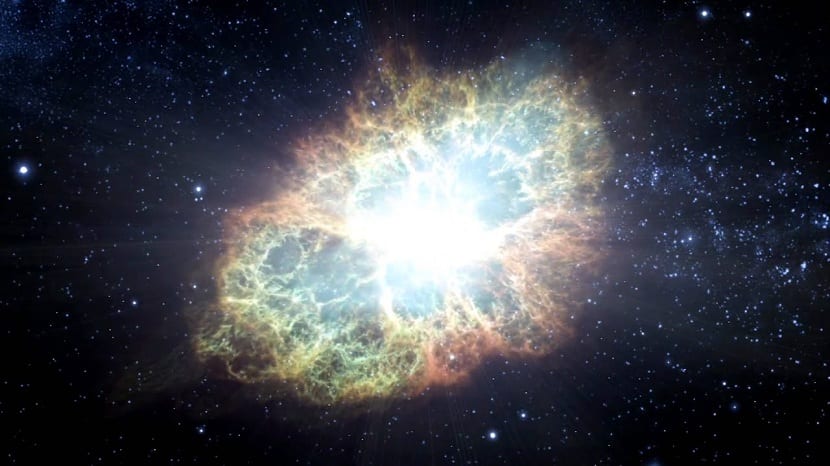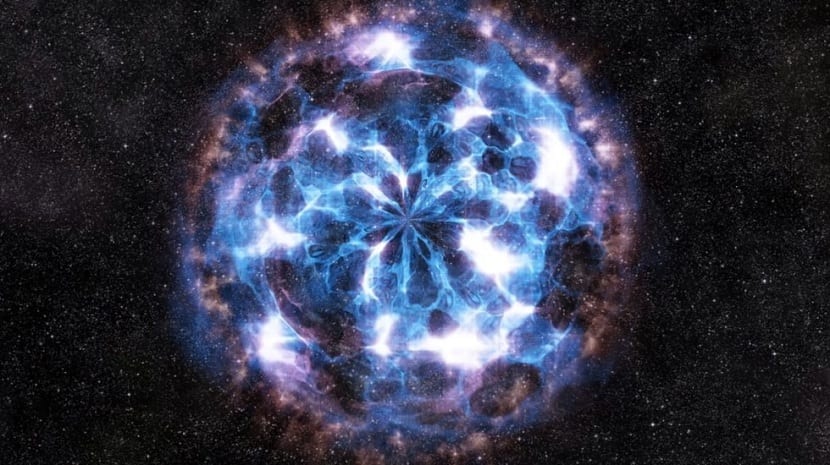
In the universe things also "die" in some way, they are not eternal. The stars that we see above the sky also have an end. The way they die causes a supernova. Today we are going to focus on what a supernova is, how it is formed, and the consequences of having one in the universe.
If you want to know more about the supernova, this is your post.
What is a supernova

All this supernovae has its origin in 1604, with the astronomer Johannes Kepler. This scientist discovered the appearance of a new star in the sky. It is about the constellation Ophiuchus. This constellation could see it for 18 months nothing more. What was not understood at that time is that what Kepler was actually seeing in the sky was nothing more than a supernova. Today we already know what supernovae are and how we see them in the sky. For example, Cassiopeia it is a supernova.
And it is that the supernova is nothing more than the explosion of a star that occurs as the end of the stage of the life of a star. They are small states that launch in all directions all the matter that was contained in the star. Scientists have always wondered why stars explode in this way when they are already dying. A star is known to explode when the fuel that generates energy in the star's core runs out. This causes the radiation pressure that is continuously preventing the star from collapsing and the star yields to gravity.
When this happens, it gives rise to stellar residues that are not stable against gravity that does not stop at any time. After all, like many things we have here on Earth that depend on fuel, the same thing happens in a star. Without that fuel that is feeding the star, it cannot continue to shine in the sky.
There are two types of supernovae. Those that are formed with a mass of 10 times that of the Sun and those that are less massive. Stars that are 10 times the size of the Sun are called massive stars. These stars produce a much larger supernova when they come to an end. They are capable of producing a stellar residue after the explosion that would be either a neutron star or a black hole.
Mechanism of the stars

There is another system that causes a supernova to appear and it is not by the explosion of a star. It is known as the "cannibal" mechanism. and it results in the appearance of a supernova where a white dwarf eats its companion, so to speak. For this to happen, a binary system is needed. And it is that a white dwarf cannot explode, but progressively cools as it runs out of fuel. It gradually becomes smaller and less luminous pore.
Therefore, this supernova creation mechanism requires a binary system where one white dwarf can merge with another. It can also happen that the core of a star already in the final phase of evolution eats its companion. In the case of these binary systems, the white dwarf that is about to die must receive the matter it needs from its partner until it forms a certain mass. Normally, that mass has a size limit that is usually 1,4 times the size of the Sun.. At this limit, called the Chandrasekhar limit, the rapid compression that occurs inside makes the thermonuclear fuel that forms the supernova reignite. This thermonuclear fuel is nothing more than a mixture of carbon and oxygen at a high density.
The only way to do it is that another star can transfer mass to it, and this is only possible in a binary system. When this happens, the dying star explodes and takes away his sister, leaving no survivor. This is what happened in 1604 with Kepler's star.
After the explosion of these binary systems, only clouds of dust and gas remain. In some cases, it is possible that the companion star that is able to move from its initial site remains, due to the large shock wave that the explosion has generated.
A supernova seen from Earth

As we have mentioned several times in this article, Kepler was able to see a supernova in the sky in 1604. Of course, at that time, he was not quite sure what he was seeing. Thanks to the technology that is developed today, we have more sophisticated and efficient measurement and observation instruments with those of us who can observe stellar explosions even outside the Milky Way.
They have inhabited star explosions that have made history and that have been observed from our planet. These supernovae appeared as if they were new stellar-looking objects and greatly increased in brightness. This went on, to the point of becoming the brightest object in the sky. Imagine that day by day you are observing the universe and, suddenly, one day you visualize a very bright object in the sky. It's probably a supernova.
The supernova that Kepler observed is known to It was brighter than the planets of the Solar system like Jupiter and Mars, though less than Venus. It must also be said that the brightness produced by the supernova is less than that produced by the Sun and the Moon. You also have to take into account the speed it takes for light to reach Earth and know the distance at which the supernova occurs. If this explosion occurs outside the Milky Way, we are probably seeing an explosion that has already happened, but that the image is taking longer to reach us due to the distance at which we are.
I hope that with this information you can learn more about the supernova.